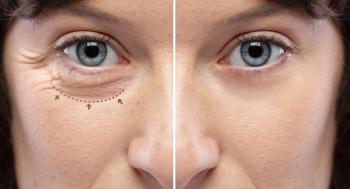
Advanced OCT opens way for 3-D retinal images
Fort Lauderdale, FL—Three-dimensional optical coherence tomography (3-D OCT) imaging and mapping of intraretinal layers are possible using high-speed, ultrahigh-resolution (UHR) OCT, the latest research tool in OCT technology.
High-speed, UHR OCT can achieve image resolutions as high as 2 μm, enabling the clear visualization of all major intra-retinal layers, and can produce images more than 50 times faster than standard OCT technology. This research technology provides improved resolution, and has eliminated the artefacts associated with ocular movement, enabling 3-D imaging and mapping of ocular structures, according to Vivek Srinivasan, MS, who spoke at the annual meeting of the Association for Research in Vision and Ophthalmology.
Using the high-speed, UHR OCT research instrument, 25,000 axial scans can be acquired in 1 second. The imaging speed results in preservation of the contour of the retina and the optic nerve head, according to Srinivasan.
UHR OCT advantages
Conventional OCT sequentially detects echoes of light from different depths. New detection techniques, known as "Fourier/ spectral domain" detection, use a spectrometer and CCD camera to detect echoes of light from many depths simultaneously. Because all of the light from different depths is detected simultaneously, a dramatic increase in speed is possible. Three-dimensional renderings of the macula are possible with this research instrument. Because landmarks such as blood vessels can be visualized in 3-D OCT data, OCT images can be compared easily with findings on a fundus photograph.
Retinal mapping
Importantly, this new OCT technology enables the thicknesses of intraretinal layers to be mapped. Srinivasan demonstrated images of the ganglion cell layer and the inner plexiform layer with their characteristic patterns and displayed them on a map. Nerve fiber layer and photoreceptor mapping as well as optic nerve head analysis also can be performed.
Newsletter
Don’t miss out—get Ophthalmology Times updates on the latest clinical advancements and expert interviews, straight to your inbox.









































